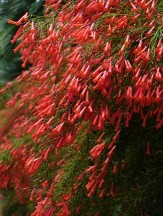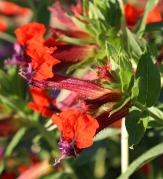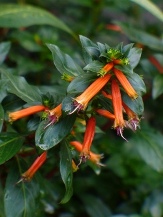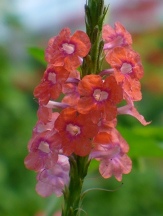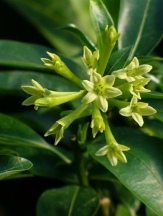Bee Plants
These plants are for the bees and are beneficial to Honeybees as well as our many native bee species like Bumblebees and Leaf Cutter Bees. Bees generally see flowers that are in the blue and green spectrum better than those in the red spectrum although they can still find red flowers via the scent of the sugary nectar. Plants that have flowers that the bees can rest on are also beneficial, as gathering nectar and pollen is and arduous and all consuming task. Plants in the Bean and Pea Family (Fabaceae), Verbena Family (Verbenaceae), and those in the Mint Family (Lamiaceae) were seemingly designed with these guys in mind. Some plants like Hollies even provide a caffiene kick! So plant these and Bee happy!

.jpg)
